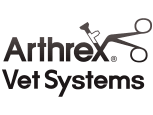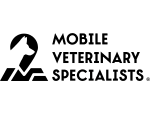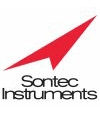Equine pastern arthrodesis is a surgical procedure performed to fuse the pastern joint. This procedure is often indicated for horses with severe pastern joint disease or instability that have not responded to conservative management.
Clinical symptoms that may lead to pastern arthrodesis include moderate to severe lameness and bony enlargement of the pastern region. Your veterinarian will perform diagnostics to confirm localization of the issue to the pastern joint and eligibility for pastern arthrodesis.
Equine pastern arthrodesis may be recommended for various reasons, including:
- Severe Osteoarthritis: Osteoarthritis, also known as degenerative joint disease, can affect the pastern joints due to wear and tear, trauma, or chronic inflammation. When conservative treatments such as medication, joint injections, and supportive shoeing fail to alleviate pain and lameness, pastern arthrodesis may be considered to stabilize the joint and reduce discomfort.
- Chronic Instability: Some horses may experience chronic instability or laxity within the pastern joints, leading to recurrent lameness, joint effusion (swelling), and decreased performance. Pastern arthrodesis can help restore stability to the affected joint, improve weight-bearing ability, and prevent further degeneration or soft tissue damage.
- Severe Traumatic Injury: Severe traumatic injuries to the pastern joint, such as fractures, dislocations, or luxations, may compromise joint function and predispose the horse to chronic pain, lameness, and secondary complications. In cases where surgical repair is not feasible, pastern arthrodesis may be performed to restore limb stability and promote healing.
Prior to surgery, your veterinarian will conduct a thorough lameness examination, diagnostic imaging (such as radiography or computed tomography), and pre-operative bloodwork to assess the extent of joint disease, evaluate overall health status, and determine the suitability of the horse for arthrodesis surgery.
Surgical arthrodesis of the pastern joint involves the following:
Pastern arthrodesis is performed under general anesthesia to ensure the horse remains immobile and pain-free throughout the procedure. After administering anesthesia, the surgical site is aseptically prepared, and the affected limb is carefully positioned to facilitate optimal access to the pastern joint.
The joint is surgically approached, and any remaining cartilage within the joint is removed to create a clean, stable fusion bed. Internal fixation of the joint is performed either with plates and screws, or with lag screws. A cast is placed for anesthetic recovery, and the horse will continue to wear the cast in the early postoperative period.
- Postoperative care is crucial and can take several months for the fusion to occur.
- Prognosis depends on the limb involved, the pathology present, and the expectations for the horse. However, many of these horses can return to some degree of athletic endeavor.
Following pastern arthrodesis, the horse is carefully monitored and may remain in the hospital until cast removal. Your horse will receive antibiotic and anti-inflammatory medications and initially receive prolonged stall rest, followed by a rehab program of controlled exercise. Full bony fusion may take several months, and follow-up evaluation throughout the recovery period will guide increasing safe exercise for the horse.
The prognosis for horses undergoing pastern arthrodesis depends on various factors, including the severity of joint disease, the success of surgical intervention, and the horse’s response to rehabilitation and management protocols. The prognosis is better for horses undergoing the procedure on hindlimbs and/or for osteoarthritis, while it tends to be lower for forelimbs and/or because of fracture. Many horses experience significant improvement in lameness and quality of life following arthrodesis and may be able to return to full performance, while others require ongoing supportive care, must be retired, or reduce activity, or may develop complications over time that necessitate further intervention.













